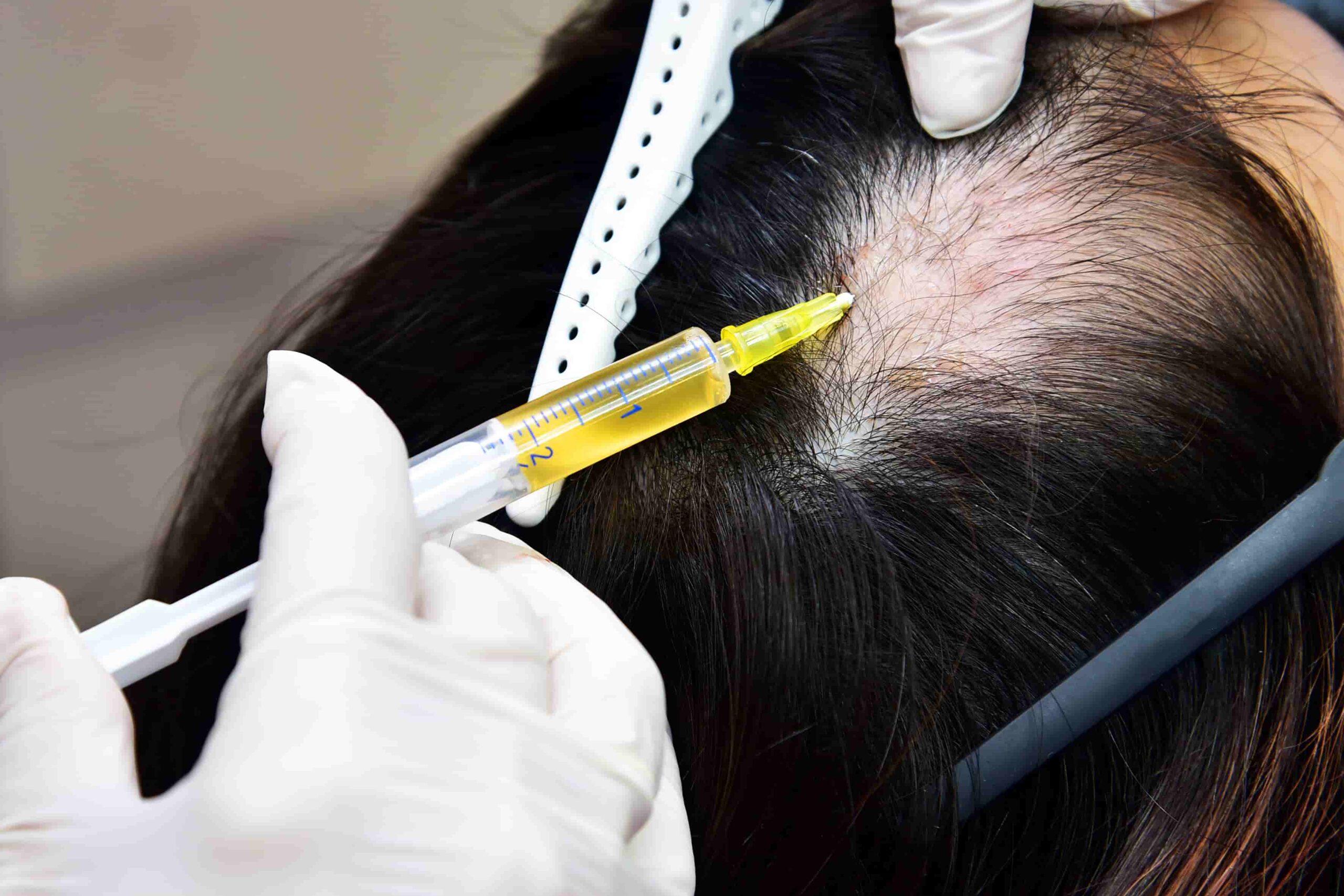Article At A Glance
- FUE can provide benefits such as minimal scarring and a quicker recovery time.
- FUE does not require general anesthesia, making it a safer option.
- Follicular Unit Extraction surgery leaves no scars.
A wide forehead or a high hairline can lower one’s self-esteem and draw attention away from their best features. As a result, many people end up wearing hats or resort to hairstyles specifically aimed at covering up their hairlines or foreheads. Some women go as far as to never even consider hairstyles like a ponytail for this reason. There are a lot of reasons for a high hairline like genetics, past surgeries, or even hair loss. Many people put up with this problem simply because they are unaware that there is a procedure that can help both men and women reduce the size of their forehead which in turn, lowers their hairline. This surgical procedure is known as a hairline advancement procedure and also as a forehead reduction procedure. When the average hairline begins at approximately 5 to 6.5 centimeters above the brows, anything higher than this gives a larger forehead (and higher hairline) look, causing a face to seem like it is disproportionate. Let’s chat about some facts about the procedure that can help with this problem below!
8 Facts About Lowering Your Hairline
1. Hair transplant surgeries are nothing new.
Hair transplant surgery has been around for a long time, as far back as the 1950s where it began helping people in overcoming their issues with baldness and thinning hair. Pattern baldness and thinning hair have been a concern for men in particular for decades, but it is only in the recent modern advancements that have made hair restoration treatments more accessible. Now both men and women can enjoy their lives more fully with the fuller hair they enjoyed previously.
There have been many amazing advancements in hair transplantation over the years, but FUE, or Follicular Unit Extraction, is definitely the most popular method when it comes to restoring hair loss. It is a much more precise, cost-effective, and less invasive method. Not only that, but it also creates a much more natural result than procedures in the past. The truly amazing results can really surprise and delight patients, not to mention how seamless of a process it really is.
2. There are different ways a hair transplant surgery can be done.
Just like anything else, there are a few options when it comes to forehead reduction surgery. One such option is called the “strip” method, or Follicular Unit Strip Surgery. This method is when a surgeon makes an incision in the back of the scalp to graft hair from the section of skin there. The removed strips are divided up into grafts and moved to the targeted area.
Another method is FUE or Follicular Unit Extraction. This method is considered the latest in grafting technology. It used robotic technology and a surgeon’s skill to make this minimally invasive surgery happen. Tiny (micro) holes are punched into the back of the scalp to remove healthy hair follicles so that they can be transplanted. There is no scarring (just like in FUT) and the holes grow back in a few weeks. The follicles are then prepared to be inserted one by one into tiny holes or slits created by the doctor.
3. Follicular Unit Extraction is a longer process, but worth the extra time.
Follicular Unit Extraction is a longer procedure because the extraction process is much more meticulous than other methods, allowing the surgeon to create a much more natural look with the individual hair follicles. This is because it mimics a person’s natural hair growth pattern. A more meticulous procedure makes for a bit longer of a healing process but the end results make it worth extra time in recovering.
4. Follicular Unit Extraction does NOT require general anesthesia.
As an outpatient procedure, a patient is not required to have general anesthesia when going through micro-hair transplant surgery. Done with a localized numbing agent, Follicular Unit Extraction falls into the outpatient procedure category. Follicular Unit Extraction done with a good surgeon will incur minimal risks and is normally a seamless procedure. There is no need to worry about general anesthesia or its side effects and patients remain awake during the process.
5. No scars left behind after Follicular Unit Extraction surgery!
One of the biggest upsides to Follicular Unit Extraction is that you won’t have to worry about scars being left behind after the surgery. As a matter of fact, the donor area heals in a matter of days and even the incisions in the target area will heal with no visible scarring. Those incisions are so tiny that they will heal leaving no traces behind at all. The scabs that form will go away in a 7-10 day healing period.
6. Forehead reduction surgery has a super quick recovery time.
Some people wonder if they can go to work the day after surgery. And while this is possible, it’s not really suggested. You will have some very slight swelling and tenderness in the surgery area for 2-5 days and you will need to wear a bandage for up to 48 hours after surgery. It’s best to rest relax during those two days as you may have a bit of mild discomfort. Most patients are able to work from home during that time if needed.
Additional Read: Everything You Need to Know About Forehead Reduction and Hairline Lowering Surgery
7. The new hair will fall out. (But, don’t worry, this is normal!)
Don’t worry if your new hair transplants begin falling out a couple of weeks after surgery. It’s completely normal. The new transplants actually need time to adjust to their new positions, so the hair falling out is a part of the healing process. You should start to see new growth in 3-4 months and it may be 6-9 months later before you see the “end” results.
8. A good surgeon equals a good procedure.
Hair transplant surgery is a seemingly simple and risk-free procedure, but don’t overlook the fact that it is only as good as the doctor who performs it for you. You want a qualified and experienced doctor to perform your surgery so you get the end result you hope for and deserve. A doctor who knows where and how to place follicles so that your natural hair growth pattern is mimicked is of utmost importance. So, while choosing to have surgery is the important first step in taking back your hairline confidence, choosing the best hair restoration surgeon to help you is the most important second step.
There are many men and women today who have been struggling with hair loss, hair thinning, and receding hairlines. Not knowing what to do to correct the problem can cause anxiety and even cause a constant state of worry and overwhelm. Northwestern Facial Plastic Surgeon of Chicago is here to help. Having any surgery done is a big decision for most people, so we’re here to answer any and all questions you may have.
Additional Read: Everything You Need to Know About Forehead Reduction and Hairline Lowering Surgery
Dr. Sidle is available for initial consultations and can meet with you personally to discuss your expectations, needs, and goals. You are encouraged to be a proactive participant in your care and in the decision-making process when it comes to your surgery. Dr. Sidle will listen to all of your concerns and also get a better understanding of what you hope to achieve with your surgery. This includes your expectations of results, recovery period limitations, perform a detailed examination, and discuss treatment options. Please be sure to book your personal consultation today.
We look forward to hearing from you and helping you in the near future.



